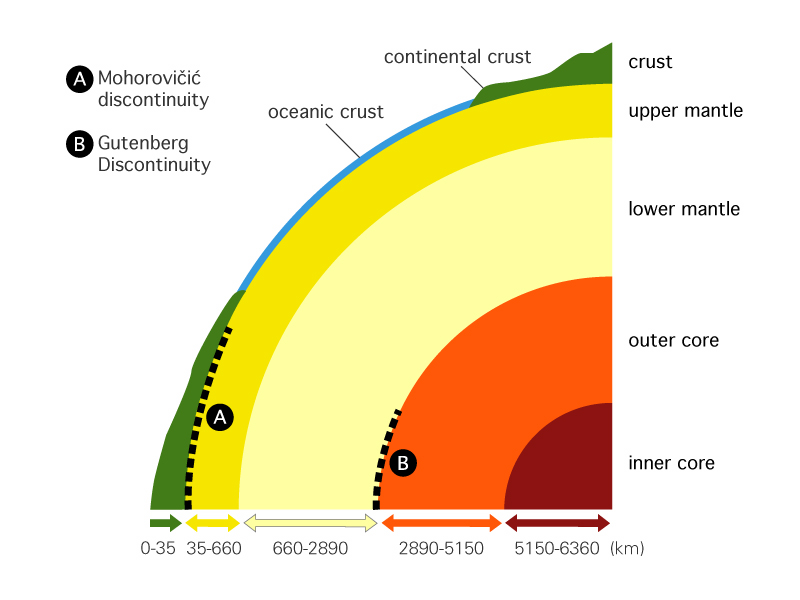In 1906, British geologist Richard Dixon Oldham (1858–1936) noticed that P waves were not recorded at seismographs which were located at angles between 104 degrees to 140 degrees away from an earthquake. This P wave shadow seemed to indicate that there was another change in composition somewhere in the Earth’s interior.
In 1914, German geologist Beno Gutenberg (1889–1960) accurately measured the depth of this new boundary layer at 2,900 km (approximately 1,800 miles). In addition, it was observed that S waves do not travel at all at these lower depths. The conclusion from this evidence was that there was another boundary layer at a depth of 2,900 km (approximately 1,800 miles). The composition of the Earth at this depth was also determined to be liquid, since S waves cannot travel through liquids. This was the first piece of evidence for the Earth having a liquid core. This failure of S wave transmission also causes a shadow in seismic waves similar to the P wave shadow. This S wave shadow is, however, larger, since it cannot transmit at all through the center of the Earth, and ranges from a 104 degree angle to a 180 degree angle.
This boundary layer measured by Gutenberg is today called the Gutenberg Discontinuity and marks the boundary between the mantle and the core. The density in the mantle above the Gutenberg Discontinuity is 6 g/cm3 . This abruptly jumps to a density of 9 g/cm3 below the Gutenberg Discontinuity. This rapid change in density supports the concept of the rocky mantle changing into a liquid nickel-iron core, a composition first suggested by Daubrée in 1866. Gutenberg spent a significant part of his career at the California Institute of Technology (Caltech) collaborating on many projects with Charles F. Richter (of Richter Scale fame).

